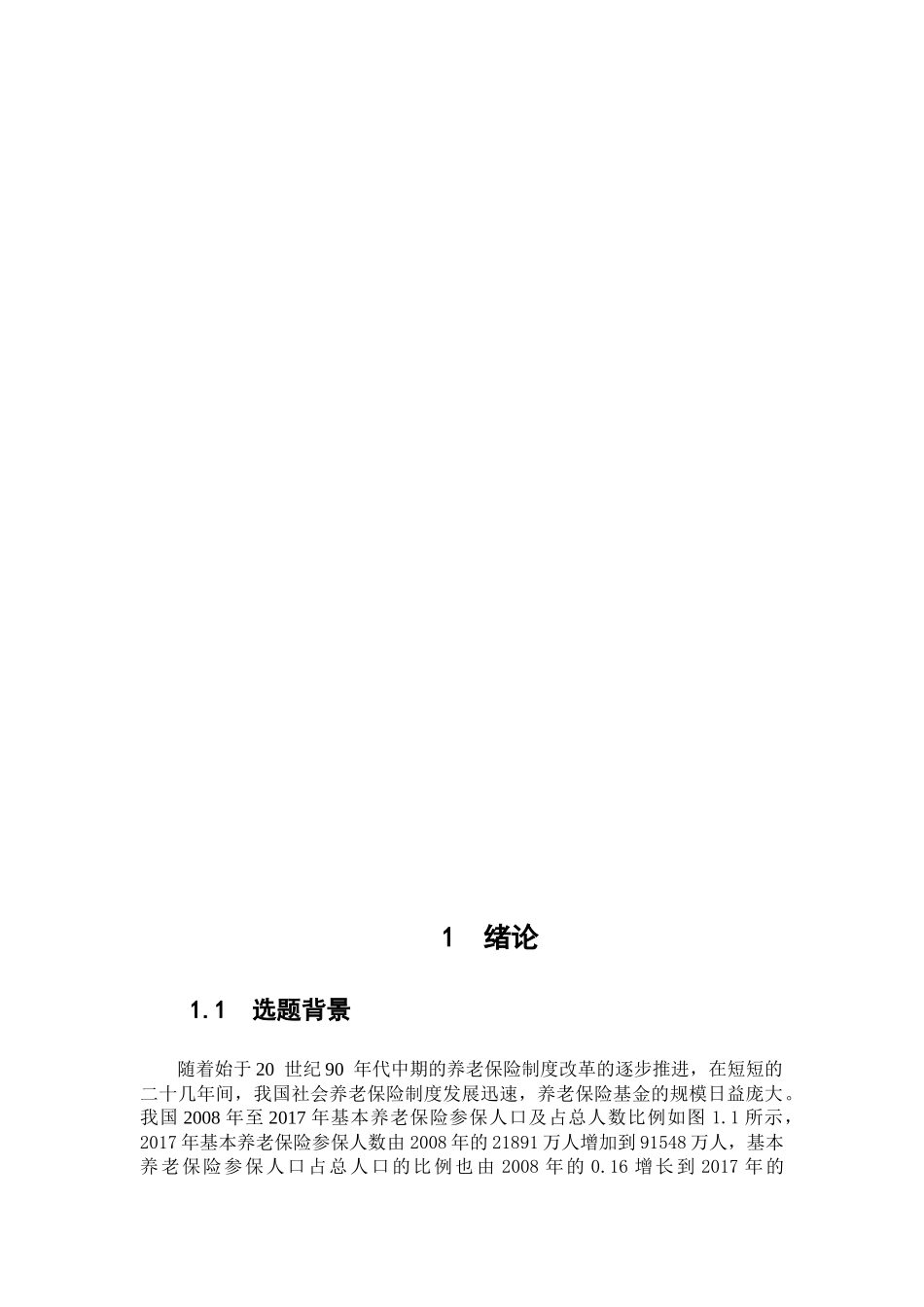摘 要目前我国养老保险制度不断完善发展,参保人员数量大幅增加,养老保险基金无论是收入、支出还是累计结余的金额都快速增长。作为百姓的“养命钱”,政府必须要加强对养老保险基金的管理,保障基金的安全、完整性同时也要保障基金的保值增值实现财务可持续性。然而规模如此庞大的养老保险基金却屡屡出现政府官员挪用、挤占事件,并且养老保险基金严重的收不抵支也引起了社会百姓的强烈关注。对我国养老保险基金开展绩效审计,有利于评价政府部门基金管理运营的效果,保障基金的保值增值,维护社会公众的利益。就目前国内外有关养老保险基金绩效审计的研究成果来看,绝大部分关注理论层面,基于实务视角的研究比较缺少。本文的研究就是在分析总结了国内外相关的文献综述的条件下,就研究存在的不足之处进一步展开探讨。本文就养老保险基金绩效审计的相关理论结合对养老保险基金、绩效审计、养老保险基金绩效审计的概念总述,在此基础上构建了我国养老保险基金绩效审计的实施框架,具体包括审计主体、客体、目标、审计程序和方法、绩效评价体系、审计结果公开。接着通过审计署公布的两份养老保险基金审计公告对我国养老保险基金绩效审计进行总体分析,同时,以 G 省开展的 2018 年度养老保险基金绩效审计项目进行例证分析,针对两者存在的问题提出具有针对性的完善养老保险基金绩效审计的对策和建议,以期能为我国养老保险基金绩效审计理论和实务工作的开展提供一定的参考。关键词:养老保险基金;绩效审计;实施框架 ABSTRACTAt present, China's old-age insurance system is constantly improving and developing, the number of insured personnel has increased substantially, and the amount of old-age insurance funds, whether income, expenditure or accumulated balance, has increased rapidly. As the "maintenance money" of the people, the government must strengthen the management of the pension fund, ensure the safety and integrity of the fund, and also ensure the value of the fund to achieve financial sustainability. However, such a large pension fund has repeatedly been misappropriated and crowded out by government officials, and the serious overpayment of pension fund has also aro...


